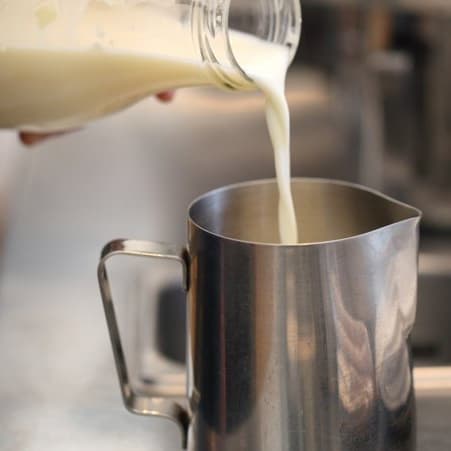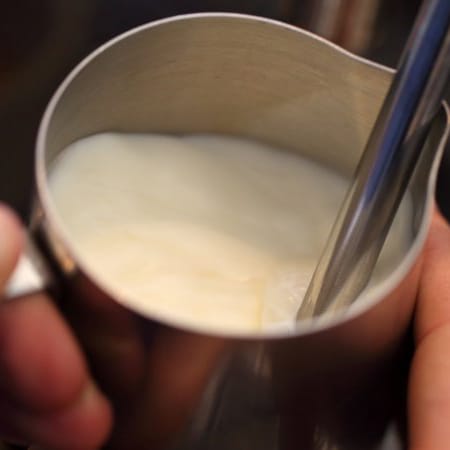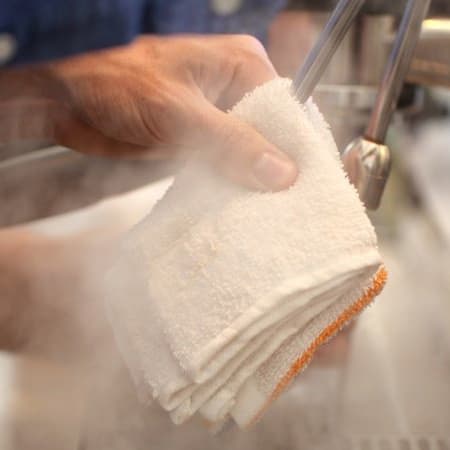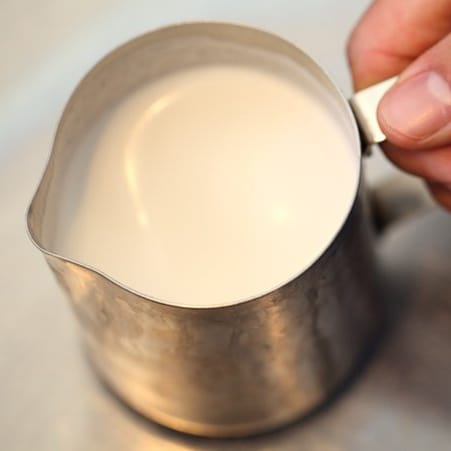
Milk and Art
That other ingredient in all your favorite espresso drinks
It's hard to pin down when exactly latte art was invented, or who invented it. Coffee geek lore has it that Espresso Vivace's David Schomer was the first American to really nail it back in the mid-eighties. In Italy, meanwhile, a gentleman named Luigi Lupi was doing the same thing around the same time. One thing's for sure, though: Developing perfect latte art is a bit like beginning an exercise regimen. Things may start out a little awkward and puffy, but you're guaranteed steady (if modest) progress if you hang in there. Though there is disagreement within the coffee world about what milk's proper texture ought to be, we (along with pretty much all the other specialty coffee companies) prefer to craft a silky “microfoam” – something akin to wet paint or “white chrome”, as Schomer himself put it all those years ago.
- WHAT YOU'LL NEED
Ceramic or paper cup
Fresh, organic whole milk
Espresso machine and steam wand
Stainless steel pitcher
Thermometer
Step One
Using a 12-oz. pitcher, fill it with about 10-oz. of milk.
If using a 20-oz. pitcher, 14-oz. will do. In either case, this is about a pinky's width below the bottom of the nozzle.

Step Two
Angle the pitcher so that your steamwand is aimed diagonally into the milk's lower right.

Step Three
Place the tip of the wand a centimeter or two below the milk's surface and turn it on.
You'll hear a tearing sound. After about two seconds, quickly but purposefully submerge the wand below the surface of the milk – not so deep that you hit the side of the pitcher, not so shallow that you continue to create bubbles.

Step Four
Submerging the wand will create the “whirlpool” motion necessary to create microfoam.

Step Five
Once your milk has reached between 140-145 degrees Fahrenheit, turn off the steam wand.
Purge it, and give it a few vigorous wipes with a clean towel.

Step Six
Tap the pitcher on a flat surface to break any remaining bubbles.
Give it a few swirls to equalize the texture. The consistency should resemble wet paint, or “white chrome,” to borrow a phrase from Espresso Vivace's David Schomer.

Step Seven
To achieve exquisite latte art, begin pouring your milk slowly.
To achieve exquisite latte art, begin pouring your milk slowly. Start with a narrow stream to avoid breaking the espresso's crema. Once your drink is about half full, lower your pitcher's spout so that it's almost touching the liquid. This will guarantee strong contrast. Continue pouring.
